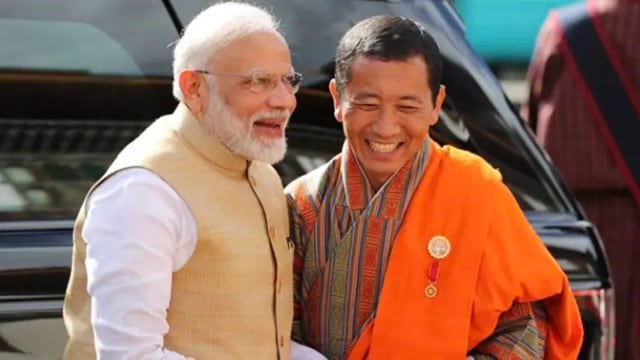
Two cross-border railway lines covering a distance of 89 kilometres and costing around Rs 4,000 crore, which will connect the states of West Bengal and Assam to Bhutan, were announced by the Indian government on September 29. The announcement was made by the Minister of Railways, Ashwini Vaishnaw, and the Foreign Secretary, Vikram Misri.
Though Thimphu has been eager for railway connectivity with India for a long time, this project is a result of the momentum gained during Prime Minister Narendra Modi’s 2024 visit to Bhutan. The railway lines will connect Kokrajhar in Assam to Gelephu in Bhutan, and Banarhat in West Bengal to Samtse in Bhutan. They are expected to be completed within the next three to four years.
Bhutan, a landlocked country, lacks any cross-border railway connectivity. This project will give Thimphu access to India’s vast railway network while promoting tourism, trade, and increased connectivity with India’s Northeast. Thus, both sides have much to gain from the new links. India is Bhutan’s largest trading partner, and the railway lines will help boost economic development and create jobs.
It is hard to ignore the geopolitical significance of the projects. The lines are close to one of India’s most vulnerable geographical regions — the “Chicken’s Neck”, the narrow corridor that connects the mainland to the northeastern states.
The Doklam standoff with China in 2017 and the recent statement by Bangladesh’s Chief Advisor to the interim government, Mohammad Yunus, about India’s northeastern region being “landlocked” underscore the need for infrastructure growth. Railways will definitely provide better economic integration, but they can also facilitate faster and more efficient movement of troops, weapons, and resources, thereby enhancing security preparedness.
The Indian government has been trying to build infrastructure — railways, roads, bridges, and tunnels — in remote regions that share borders with China, Bangladesh, Myanmar, and Bhutan. The recently completed Sela Tunnel and the Darbuk–Shyok–Daulat Beg Oldie (DS–DBO) road are part of this ambition. Within this broader strategy, India has been focused on bridging the infrastructure gap with China.
When it comes to India–Bhutan ties, the China factor looms large. Bhutan is the only country in South Asia that does not have diplomatic relations with Beijing. This has not stopped China from wooing Bhutan through investments and aid. Bhutan also has an unresolved border dispute with China, and despite repeated efforts, there has been no major breakthrough. Given the power differential between the two nations and increasing Chinese assertiveness in the region, the Indian announcement on the railways is most welcome.
In addition, China announced in August that it would begin constructing a railway line connecting Xinjiang with Tibet. This line is expected to pass quite close to the Ladakh region, running parallel to the G219 highway and crossing Aksai Chin. This will aggravate India’s security concerns, as it adds to the already sophisticated network of Chinese infrastructure across the border.
China’s infrastructure expansion across the Line of Actual Control (LAC) has also been complemented by its investments in South Asia under the Belt and Road Initiative (BRI). It has strategically developed, and is continuing to build, key infrastructure such as ports, airports, and railways in countries that share borders with India — especially Pakistan, Bangladesh, and Nepal.
The cross-border railways between India and Bhutan, therefore, underscore New Delhi’s proactiveness in building cross-border capabilities and its commitment to the economic development of and integration with South Asia. It is also a message to Beijing that China will not be allowed a free hand when it comes to power plays with smaller nations in the region.
The writer is Associate Professor, O P Jindal Global University